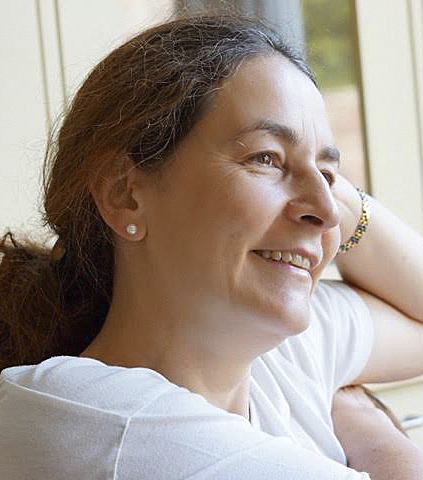Franz Liszt was a controversial figure in his day. More than 200 years on, he still is. As composer, performer and human being alike, he is multifaceted and paradoxical. At his concerts women swooned in the aisles – but though a ladies’ man and fabled lover, he was always attracted to the Church and ultimately took holy orders; and though a public showman, he was also a creative visionary whose most adventurous works pointed towards those of his son-in-law, Richard Wagner, and beyond. Often misrepresented, he is a seminal figure in the musical landscapes of both the 19th and 20th centuries.
Back in the 1980s, it was fashionable to dismiss his over-the-top opera fantasies, to sigh condescendingly at the rhetorical excesses of the Sonate: Après une lecture de Dante, to groan over the flashy transcriptions of Schubert songs. Some pianists tried to rescue Liszt from the impure taint of technical display, accentuating the epic, abstract qualities of the B minor Sonata but downplaying its showiness. Today, though, countless pianists go overboard in the opposite direction, crashing through the Hungarian Rhapsodies and fantasies on Don Giovanni and Rigoletto as fast and loudly as possible, paying scant attention to their wealth of colour and detail.
When and where was Franz Liszt born?
Liszt was born on 22 October 1811 in Raiding, a village in the heart of the Austro-Hungarian Empire. His father, Adam Liszt, was a musician himself, a cellist in the orchestra at the Eszterházy court, where he performed under the baton of Haydn and even, once, Beethoven.
When did Franz Liszt leave Hungary?
Liszt left his native Hungary before he was a teenager, but his music flows with the mesmeric magic of the gypsy players he had encountered as a child. A child prodigy, he studied in Vienna with Carl Czerny before moving to Paris and giving concert tours when he was 12. His compositional studies began under the tutelage of Ferdinando Paer, but at 14, he underwent a profound religious coup de foudre and begged his father to let him become a priest. The request was refused, but the death of his father only a year later was a blow which left a lasting impact on the youngster’s complex psyche.
He suffered a breakdown in the late 1820s, his disillusion with music worsened by a romantic let-down. Rescue came in two startling forms. One was the 1830 Revolution in Paris, which injected him with fresh idealism and energy. The other was a concert by Niccolò Paganini in April 1832. That evening inspired Liszt’s future. He would become, he decided, as great a pianist as Paganini was a violinist. He undertook solo concert tours on a scale never seen before; the notion of the piano recital as we know it now was his invention, designed for himself, and the virtuosity of his compositions was unprecedented in the scope of piano music. The result was the fabled ‘Lisztomania’ which swept Europe.
Yet controversy and jealousy were never far from this newly invented phenomenon, the international superstar. His personal life was dramatic: in 1835 he eloped to Switzerland with the married Marie d’Agoult, with whom he lived for four years and had three children.
His fever-pitch recitals were condemned by many on grounds of poor taste, but perhaps out of jealousy. Nevertheless, Liszt remained on friendly terms with many of his peers including Mendelssohn, Chopin and Schumann. He maintained his spiritual leanings, too, which emerged in compositions such as the Harmonies poétiques et religieuses. Some of his finest works sprang from extra-musical inspiration, for example Années de Pèlerinage, a musical evocation of the landscape, art and poetry of Switzerland and Italy.
If his orchestral music never reached the same peak of inspiration as his output for solo piano, he is credited with inventing the symphonic poem. Although most of his contributions to this genre of story-telling in music are rarely heard now – Hungaria? Hamlet? Battle of the Huns, anyone? – these works were hugely influential, not least on Wagner and, later, Strauss; and the ambition of his Faust Symphony made up for the brashness of Les préludes. At the other extreme, his substantial repertoire of solo songs amply displays the influence of Schubert.
Liszt abandoned Lisztomania in 1847, retiring from the concert platform aged 36 and settling in Weimar, where he had been appointed ‘Kapellmeister extraordinaire’. The same year, he met the Princesse Carolyne zu Sayn-Wittgenstein, who moved in with him and hoped to marry him after a tortuous process extracting herself from her previous marriage. The story goes that the pair intended to marry on Liszt’s 50th birthday, but the plans fell through. Some say that this was because Carolyne’s divorce was not finalised; others that she changed her mind because Liszt had spent her fortune and still indulged in love affairs.
Liszt’s volte face was extreme: in 1865 he joined a Franciscan monastery in Rome, taking minor orders and becoming the Abbé Liszt. From then on he divided his time between Rome, Weimar and Budapest, and between teaching and composing. When his daughter Cosima eloped with Wagner from her marriage to the conductor Hans von Bülow, the religious Liszt declined to speak to her for years. But he continued to champion Wagner’s music. Musically, Liszt’s late piano music – notably such works as Nuages gris and Bagatelle sans Tonalité – find him exploring the outer reaches of harmonic language in a way that not even his son-in-law had yet attempted.
When did Franz Liszt die?
Liszt remained, to his death in July 1886, a Byronic, Romantic individual. To represent him as lyrical and passionate without virtuosity is to misrepresent his nature; to display his music as shallow showmanship is to deny his massive intellectual and spiritual vitality. Perhaps we’re still trying to get the measure of Franz Liszt – but that’s as good a reason as any to keep on trying.
Jessica Duchen
